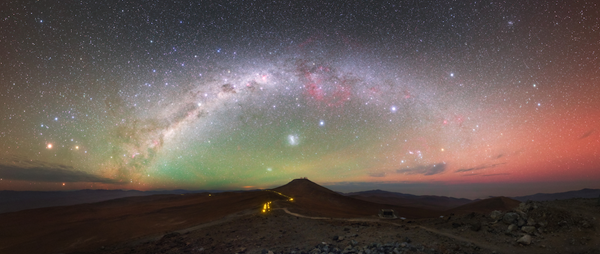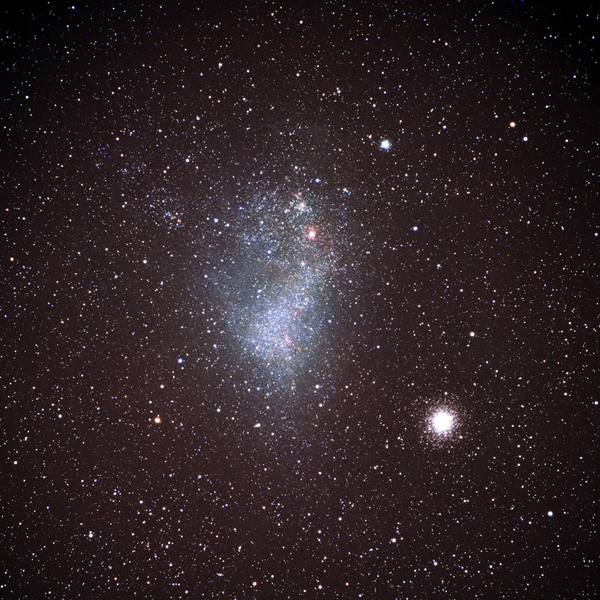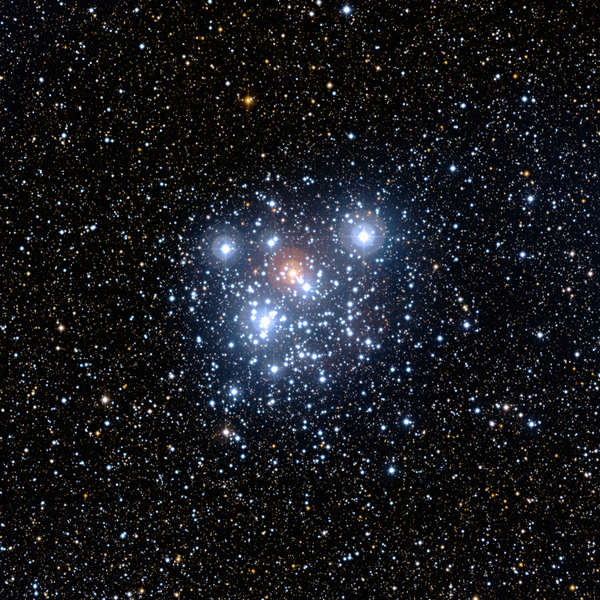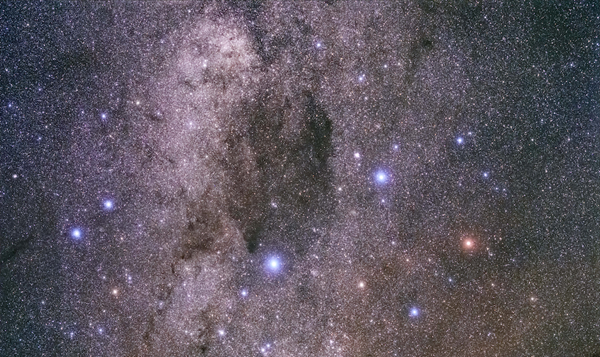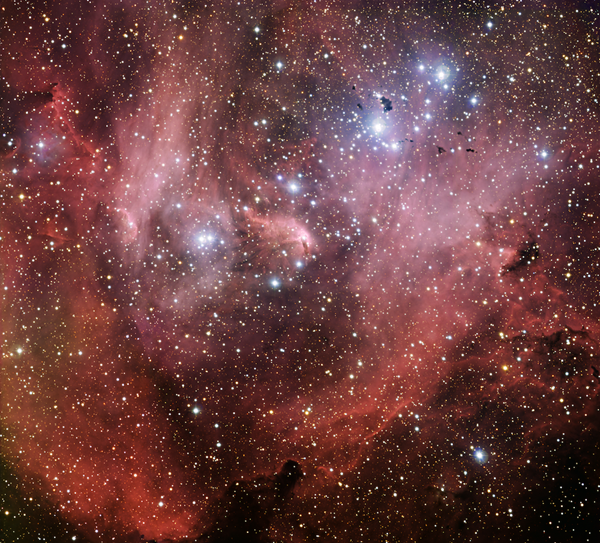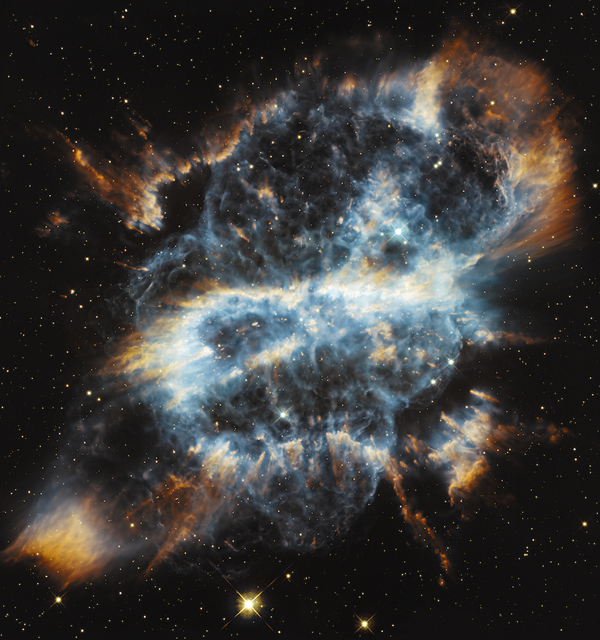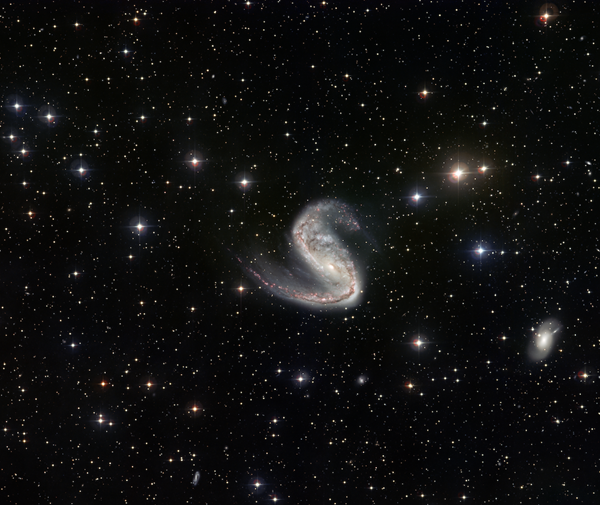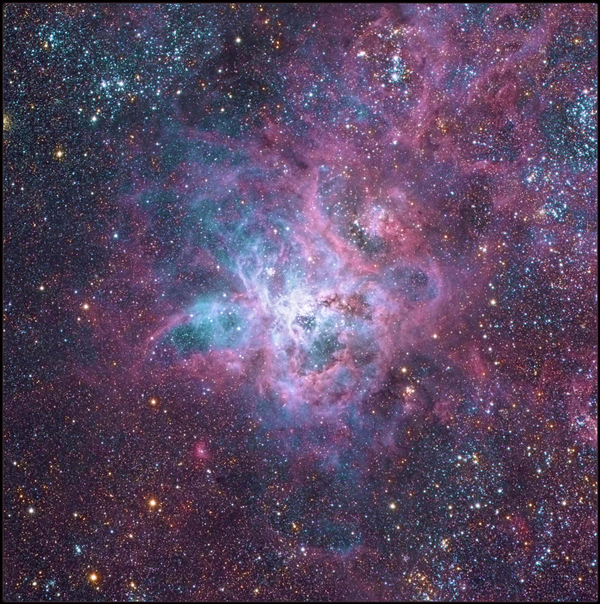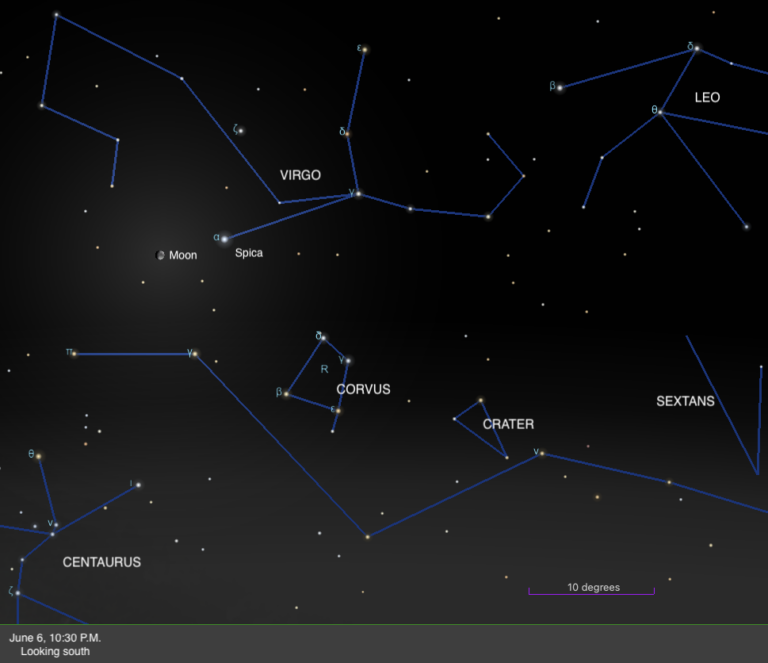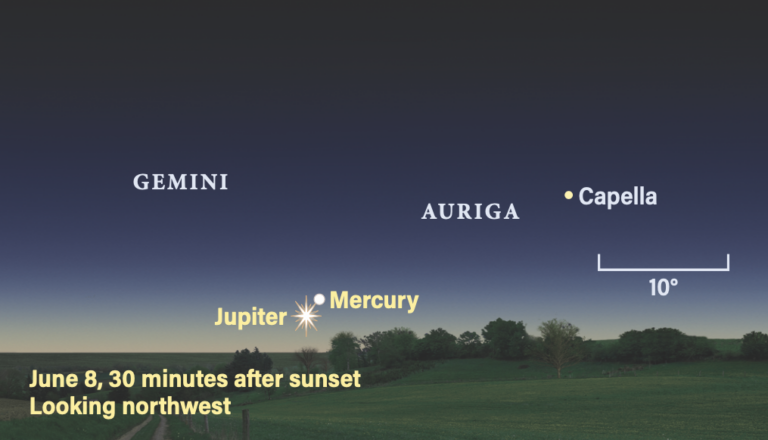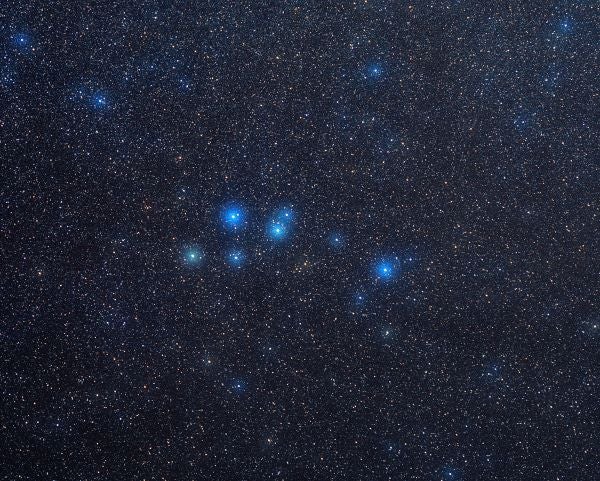For this story, I’ve chosen deep-sky objects in the far south — within 30° of the South Celestial Pole. Once you point a telescope toward that region, you’ll encounter constellations you may not be familiar with: Apus, Ara, Carina, Centaurus, Circinus, Crux, Dorado, Horologium, Hydrus, Indus, Mensa, Musca, Octans, Pictor, Reticulum, Triangulum Australe, Tucana, and Volans. And although Carina, Centaurus, and Crux contain bright stars you can navigate by, luminaries in the other groups are few and far between.
What are the best locations to view these southern wonders? One is the tip of South America, either in Chile or Argentina. From a latitude of 50° south, the South Celestial Pole stands 50° high, so the objects in this story will never set. Instead, they’ll lie between 20° and 80° above the horizon all night.
But let’s say you’re heading to Melbourne, Australia. From there, targets on this list will appear about 12° lower. Your best views from either location will come when an object stands highest above the horizon.
I’ve listed these objects in order of right ascension. Pick one that’s high in the sky, and the subsequent objects will rise to their highest points after it. Good luck!
The list
As it happens, our first target is one of the best: 47 Tucanae (NGC 104). This globular cluster forms a celestial pairing in Tucana with the Small Magellanic Cloud — both objects are easily visible to the naked eye. Among globulars, only Omega Centauri (NGC 5139) outshines NGC 104.
To the naked eye, 47 Tucanae appears as a magnitude 3.8 fuzzy “star.” A 3-inch telescope will begin to resolve this cluster’s stars, but they really put on a show when you use an 8-inch or larger scope. Through such instruments, the cluster is a 50′-wide ball of stars you can resolve nearly to the core. Be sure to note the many streams of stars that emanate from its central region 6′ in diameter.
Our second target, bright globular cluster NGC 362, lies in Tucana on the northern edge of the Small Magellanic Cloud. It’s not part of that galaxy, however, and sits seven times closer to us.
Sharp-eyed observers will see it without optical aid as a magnitude 6.5, extended “star.” Its apparent diameter is 12.9′, more than 40 percent that of the Full Moon. Through an 8-inch telescope, NGC 362 explodes with detail. Well, except for the core — you’ll need a larger scope and high magnification to resolve any of the stars near the cluster’s center.
Our next object is a true southern showpiece. NGC 1313 sits in the southwest corner of Reticulum, 3.2° southwest of magnitude 3.8 Beta (β) Reticuli. This spiral galaxy glows at magnitude 8.9 and measures 11.0′ by 7.6′.
Most northern observers unfortunately haven’t experienced our next target: the Tarantula Nebula. This huge (30′ by 20′) emission nebula lies in the Large Magellanic Cloud, in Dorado.
Even through a 4-inch scope, the Tarantula shows loops and filaments. A dense central bar runs north to south. Open star cluster R136 is easy to spot as a 1′-wide region of several dozen bright stars. The longest filament begins near the cluster’s center and extends 7′ to the south. It then extends eastward and loops an equal distance to the north.
Our next treat carries an unusual name. The Meathook Galaxy (NGC 2442) lies 2.3° southeast of magnitude 4.0 Delta (δ) Volantis. Through a 10-inch scope, this magnitude 10.4 barred spiral shows symmetrical hooks curving from a faint, thick, 4′-long bar and a bright core. Its distorted form, which measures 5.4′ by 2.6′, hints at past interaction with other galaxies.
After the Meathook, head into Carina, 3.3° west-southwest of magnitude 1.9 Avior (Epsilon [ε] Carinae) for NGC 2516. You’ll have no trouble spotting this magnitude 3.8 object with your naked eyes — it’s one of the sky’s 10 brightest open clusters. It also spans a whopping 30′.
Still in Carina, get ready for a glorious view. Open cluster NGC 3114 lies in a spectacular star field 5.8° east-southeast of magnitude 2.2 Aspidiske (Iota [ι] Carinae). It glows at magnitude 4.2 and spans 35′.
Through a 4-inch telescope, you’ll first spot two bright stars in the cluster’s area, glowing at magnitudes 6.2 and 7.3. Have fun making patterns with the several dozen stars that surround this pair.
Our next object, NGC 3195, is a faint (magnitude 11.6) but high-surface-brightness planetary nebula 1.5° west-southwest of magnitude 4.5 Delta2 (δ2) Chamaeleontis. A 4-inch telescope at 100x will reveal this object as a slightly fat “star” 38″ in diameter. Through a 10-inch scope, crank the power beyond 200x, and you’ll have no problem seeing the nebula’s extended nature. At this magnification, it appears slightly stretched in a north-northeast to south-southwest orientation.
Binoculars will give the best view because anything above the lowest power in a telescope will magnify the area too much, really spreading the stars out. That said, if you own a short-focal-length refractor and an eyepiece that will provide at least a 1.5° field of view, you’re in for a wonderful experience.
At low power, the Southern Pleiades appears like two clusters separated by a 0.3° gulf. In the western part, you’ll see Theta (θ) Carinae and a pair of stellar arcs that originate at that star. One curves northward and the other southward. The eastern half of IC 2602 looks to me like a miniature version of the main part of the constellation Orion, albeit with stars of different brightnesses.
You’ll find our next target, the Pearl Cluster (NGC 3766), 1.5° north of Lambda (λ) Centauri — and what a sight it is. At magnitude 5.3, you can see this cluster without optical aid, but you’ll have to work at it because of the rich star field it’s in. Use 15x binoculars, and you’ll see several dozen stars. But the finest view comes through a telescope that magnifies between 75x and 100x.
Through a 4-inch scope, you can count 100 stars within a 12′-wide circle, the brightest of which shines at 7th magnitude. That collection in itself provides a sweet view, but there’s more. Riding seemingly in front of a pure-white carpet of diamonds are two pale rubies. One lies midway between the cluster’s center and its eastern edge. The other lies the same distance from the center toward the west.
For our next target, go back to 3.1-magnitude Lambda Centauri. Beginning with that star and running toward the southeast is the huge (65′ by 40′) open star cluster Collinder 249. Its oval shape spans 1°. But this area contains a lot more than a star cluster. The Running Chicken Nebula (IC 2944), a large glowing cloud of hydrogen, surrounds Lambda. You’ll spot it through a 4-inch scope.
I consider the next target, the Jewel Box (NGC 4755), also known as the Kappa Crucis Cluster, the sky’s finest open cluster. It’s not the biggest (10′) or the brightest (magnitude 4.2), or even the most populous. The reason NGC 4755 stops me in my tracks is its colorful stars.
Almost all open clusters contain hot, recently formed stars, which appear blue or white through a telescope. But in the Jewel Box, you’ll spot stars glowing blue, yellow, and orange.
A 6-inch telescope and an eyepiece that yields 50x may be the best combination with which to view NGC 4755. Through this setup, you’ll see nearly a dozen stars that exhibit color, plus 20 additional white stars and a faint backdrop composed of some 200 cluster members.
Next, head to Musca for NGC 4833, which lies 0.7° north-northwest of magnitude 3.6 Delta Muscae. This magnitude 7.8 globular cluster is easy to spot through binoculars or a finder scope, but it’s about as loosely concentrated as these objects get. You’ll see about 30 of its outer stars randomly strewn across the 13.5′-wide field of view through an 8-inch telescope at 200x. More stars lie in the central area, which stretches east to west.
Then, it’s off to Centaurus for NGC 5281. It’s a bright (magnitude 5.9) open cluster 3.3° southwest of Hadar (Beta Centauri). A 4-inch telescope at 100x reveals three dozen stars in a 5′-wide area. The cluster’s brightest member glows at magnitude 6.6 and lies just north of center. From that star, a curve of six fainter ones arcs southwestward.
Our next object, open cluster NGC 6025, lies at the northern edge of Triangulum Australe, right at that constellation’s border with Norma. You can find it 3.1° north-northeast of Beta Trianguli Australis. If you’re at a dark site, try spotting magnitude 5.1 NGC 6025 with your naked eyes. Through a 6-inch telescope, you’ll count roughly 40 stars between magnitudes 7 and 11 within a circle 12′ in diameter.
If you’re ready for something other than an open cluster, head to southern Ara, 1.2° northeast of magnitude 4.7 Zeta (ζ) Apodis, to find globular cluster NGC 6362. This fine sight glows at magnitude 7.5 and spans 10.7′.
You can spot the Great Peacock (NGC 6752), one of the sky’s brightest globular clusters, with your naked eyes from a dark site. Look for it 3.2° northeast of magnitude 4.2 Lambda Pavonis. This cluster appears big (20.4′) and bright (magnitude 5.5) for the reason you’d think — it’s close. NGC 6752 lies only 13,000 light-years from Earth.
Through any optics, this is a spectacular sight. A 6-inch scope reveals hundreds of stars orbiting a concentrated core. The brightest glows at magnitude 7.4 and sits just 4′ south-southwest of the cluster’s center. Many starry chains radiate in various directions from the center, giving NGC 6752 its popular name.
You’ll find our final object in Octans, the constellation that surrounds the South Celestial Pole: Melotte 227. Though its discoverer, British astronomer Philibert Jacques Melotte, deemed it an open cluster in 1915, we now know it is only a random alignment of stars. To find it, look 4.8° southwest of magnitude 3.7 Nu (ν) Octantis. Melotte 227 glows at magnitude 5.3 and measures a worthy 50′ in diameter. Use low power, and you’ll spot 15 stars brighter than magnitude 10.
If you have a chance to lay eyes on these objects, make the most of it. While familiar to residents of the global south, for visitors, they are sights to be savored.

